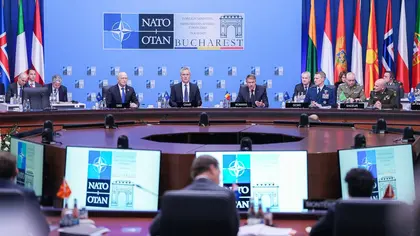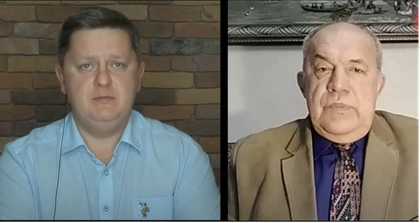NATO has said its ongoing summit in Bucharest has showcased its unity on continuing to support Ukraine as Moscow’s war against its neighbor drags into its tenth month.
But what does this mean in reality?
JOIN US ON TELEGRAM
Follow our coverage of the war on the @Kyivpost_official.
The two-day event continues on Wednesday Nov. 30 and so far the news is mixed. Here’s a roundup of what you need to know…
What is Ukraine asking for?
Ukraine’s Foreign Minister Dmytro Kuleba called for supplies of weapons, especially advanced air defense systems, to come “faster, faster, faster”, as well as the transformers needed to fix the damage to his country’s energy infrastructure cause by Russia’s ongoing missile attacks.
- Access the most up-to-date war in ukraine update in the Kyiv Post’s daily news items today.
- Get the freshest Ukraine news updates as of today.
“When we have transformers and generators, we can restore our system, our energy grid, and provide people with decent living conditions,” he said.
“When we have air defense systems, we will be able to protect this infrastructure from [subsequent] Russian missile strikes.”
“In a nutshell, Patriots and transformers is what Ukraine needs the most”, he said, referring to the U.S.-made Patriot missile defense system.
What has been promised to Ukraine at the summit so far?
NATO chief Jens Stoltenberg said allies had pledged more support for Ukraine to fix its infrastructure and would keep on sending arms and air defenses to help it better protect itself, AFP reports.
He said that he expected Russia to carry out more attacks on Ukraine’s grid as the Kremlin suffers defeats on the ground and warned Europe should “be prepared for more refugees.”

Holiday Spirit Thrives Among Ukrainians Despite War, Study Finds
U.S. Secretary of State Antony Blinken has announced a package worth $53 million “to support acquisition of critical electricity grid equipment” by Kyiv.
A senior U.S. official said the assistance would not be the last and pointed out that the Biden administration had budgeted $1.1 billion for energy spending in Ukraine and neighboring Moldova.
Separately, German Chancellor Olaf Scholz spoke to Ukrainian President Volodymyr Zelensky and said Germany would dispatch 350 generators and provide financial assistance to repair energy infrastructure worth 56 million euros ($57 million).
What about the air defense?
The news was slightly less positive on this front. Allies have given arms worth billions of dollars to Ukraine, but Kyiv is pleading for more air defense, tanks and longer-range missiles to push the Kremlin’s forces back.
Stoltenberg said there was an “ongoing discussion” on supplying the Patriot systems that Washington and others have so far refused to give to Kyiv.
There is also concern that weapons stores in some NATO countries are running low as stockpiles have been diverted to Ukraine.
NATO countries in Eastern Europe closer to the conflict than their western counterparts were more forceful in their statements.
Lithuanian Foreign Minister Gabrielius Landsbergis said his request to fellow NATO ministers was simple: “Keep calm and give tanks.”
What about NATO membership for Ukraine?
The alliance did not make any progress on Ukraine’s request to join, despite reiterating it remained committed to its pledge made some 14 years ago that Kyiv would one day become a member.
Stoltenberg insisted the “door is open” to new members but said the focus now was on assisting Ukraine in its fight with Moscow.
Oleksiy Arestovych, an aide to the Ukrainian president, said “several concrete and important announcements were made” at the summit.
“Ukraine can become a member of the alliance after the end of hostilities” and “support to Ukraine will be expanded in terms of energy and military,” he noted in a statement.
Besides the war in Ukraine, ministers will take stock of progress in the accession of NATO candidates Finland and Sweden, already ratified by 28 of the 30 member countries but which remains suspended awaiting a green light from Hungary and Turkey.
The Finnish, Swedish and Turkish foreign ministers met on the sidelines of the meeting, but Ankara did not signal that there had been any progress.
You can also highlight the text and press Ctrl + Enter






